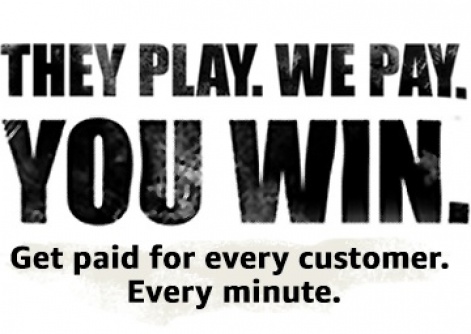Amazon Underground only launched on 27 August, but it's provoked a lot of discussion in the mobile games industry already - much of it on this very site.
We've trialled a F2P game with Underground and deemed it “broken”; we debated whether the initiative can disrupt existing models; and Amazon's Tarek El-Hawary told us that the ultimate responsibility lies unto developers.
But unanswered questions remain - in fact, Underground is a room full of proverbial elephants at this stage - so we wanted to dig even further into the motivations behind Amazon Underground and its long-term strategy.
Aaron Rubenson, Director of the Amazon Appstore, is the best placed individual to answer these questions - despite the inevitably regulated messaging of a scheme as young and experimental as Amazon Underground.
And so, given the opportunity to talk, we set about seeing what more Rubenson could help us to glean about Underground.
Hotline
First off, the big one: what's in it for Amazon?
“To understand how this works for Amazon you need to zoom out a little bit from the App Store paradigm,” Rubenson tells us.
“Any program that is going to have customers engaging with us on mobile devices, and potentially attract new customers, is a good thing for us.”
It's not difficult to see how Amazon Underground could be used to promote other aspects of the Amazon business, of course.
Fire tablets being advertised with a wealth of “actually free” content straight out of the box seems inevitable, for starters.

But Amazon is still showing quite remarkable faith in the amount of positive impact Underground is expected to have on its other products and services, with Rubenson explaining that this is no mere flash in the pan.
“This is definitely a long-term program, and one that we've said we're going to add more benefits to over time,” he replies to questions of its longevity.
Rubenson wants to see developers embarking on projects with Amazon Underground specifically in mind.
And indeed, much of the vision behind Underground relies on this long-term plan.
Fun first
The core of Amazon Underground's philosophy appears to be about more than just business, with an ideology at its core which heavily implies game design is somehow purer without the pressures of F2P.
And as such, Rubenson wants to see developers embarking on projects with Amazon Underground specifically in mind, returning to an altogether simpler (and perhaps idealised) era of game design when fun trumped all other considerations.
“What we heard from a lot of developers is that if you rewind the clock on game development to 10, 15 years ago... developers could spend 100 percent of their time making a game that was fun and compelling, and not have to worry about eking out monetisation along the way,” he says.
“What Underground allows is for customers to have something that's more akin to the premium experience,” he goes on.
“Developers can just focus on creating an engaging and compelling experience, and if they're successful in that they will monetise sufficiently to see good results.”
With this more long-term goal in mind, Amazon Underground's strategy becomes a little clearer.
If Amazon is able to convince developers that Underground-first development is a better experience, and the $0.002-per-minute rate is deemed attractive (more on that later), then it could present itself as a real alternative.
As things stand
All very well, of course, but what about the here and now? Mobile studios aren't developing for Underground; they're largely developing for the very different F2P model.
So how will these games make the transition to an incompatible model?
“While this is not true for all games, there are some games where you can simply download and have unlimited access to the in-app purchase items, and you might be able to progress too quickly,” Rubenson admits.

“It might not be as fun. So some developers have chosen to optimise their gameplay so that they're instead awarding [hard currency] using different mechanisms."
"They're maybe awarding items over time as a customer progresses through the game, or other similar mechanisms.”
At the moment, however - as evidenced by our experience with Ultimate Robot Fighting - such tweaks are not made compulsory to Underground developers.
Would developers unwilling to adapt ever be locked off from Underground?
We set the rate [$0.002 per minute] so that we think developers will be rationally incentivised to participate.Aaron Rubenson
“Our basic guidelines are that the apps available in Underground must include a paid component in another store," Rubenson explains.
"As long as an app or game is providing that same value for free, we would not block it from being on Underground."
However, should a developer be willing to make changes, Rubenson says that his team will “work with those developers on a case-by-case basis to ensure [they] are able to preserve the integrity of their gameplay.”
Inspiring belief
This naturally leads to another big question surrounding Amazon Underground: if a game requires significant tweaking in order to play well in its “actually free” version, then will it be worthwhile for developers to do it?
More simply, is the promise of $0.002 per minute of player time tantalising enough to get developers excited? Rubenson thinks so.
“We put a lot of thought into the rate. We took a look at the data we had from our platform, at how various types of apps and games were monetising relative to the number of minutes of usage,” he says.
“That means we set the rate so that we think developers will be rationally incentivised to participate.”
Furthermore, Rubenson reports that even smaller developers have been enticed by Underground, suggesting that the per-minute rate acts as a kind of leveller.
“The beauty of the Undeground model for smaller developers is that the potential psychological resistance [to spend money up-front on an unknown] is gone,” he claims.
Much of the vision behind Amazon Underground is unexpectedly long-term, then, and it seems like we'll need to see the first trickle of developers' success stories with Underground before any of its more grand schemes come to pass.
Whether or not it's equipped to handle the F2P-first design of current mobile games remains very much up for debate, but Underground's aiming for something bigger than that.
It's aiming for nothing less than a fundamental change to how mobile developers approach game design, and it will be fascinating to see how it unfolds.





















